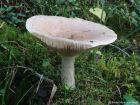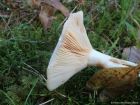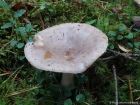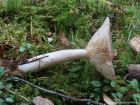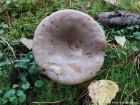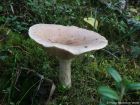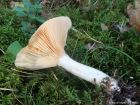Many mycologists consider Lactarius utilis and Lactarius trivialis to be the same species. However, we distinguish between them, as they differ significantly from each other from a macroscopic perspective.
Cap smooth, greasy, later depressed in the centre, pale violet-red coloured without zones. The flesh is whitish, thick, and brittle. Gills pale cream, crowded and slightly decurrent. Stem white or pallid and later often hollow. It has no ring. Spore print pale yellow or cream coloured.
Similar species include Lactarius trivialis which is darker violet, and its cap is zoned.
Many mushrooms are poisonous, and some can be lethally toxic. Distinguishing between edible and poisonous mushrooms can be very challenging. Therefore, we strongly advise against consuming wild mushrooms. This website does not contain any information about the edibility or toxicity of mushrooms.
Although efforts have been made to ensure accuracy on this website, the information may contain errors and omissions. Therefore, all content provided is for educational and informational purposes only and should not be relied upon or used as a basis for consuming any plants or mushrooms.
External links are provided for reference only. We do not endorse or take responsibility for the content, advice, or products found on these sites or in any advertisements shown on this website.
